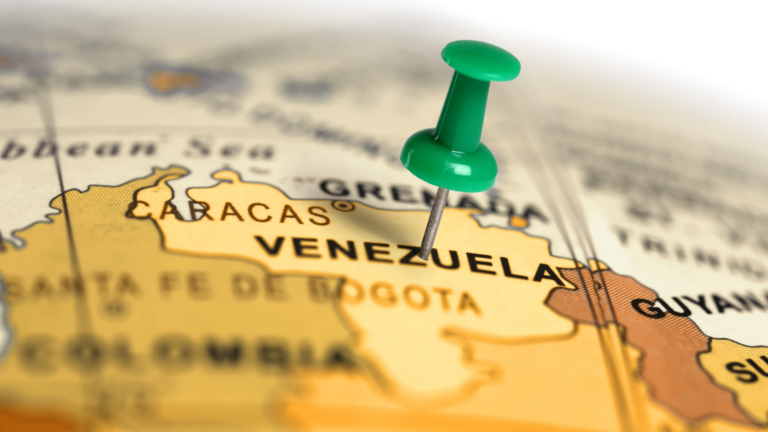The State of Abortion Rights in the U.S.
How a decade of legal and political shifts built to the fall of Roe v. Wade — and what the consequences look like today
Over the past decade, U.S. abortion policy has shifted from a federally protected right to a patchwork of state-by-state regimes. Starting with targeted regulation of abortion providers, then culminating in the 2022 Supreme Court decision that overturned Roe, the landscape has transformed.
Today, travel burdens, out-of-state access, telemedicine, and stark health disparities define abortion access.
This Deep Dive traces the timeline, key legal and political shifts, and the human and system-level consequences — and looks ahead to where things may go next.
Background: Roe, Casey, and the Framework for Abortion Access
In 1973, the Supreme Court in Roe v. Wade recognized a constitutional right to abortion based on liberty and privacy. That framework remained in place for decades until 1992, when Planned Parenthood v. Casey replaced Roe’s trimester system with a new one: states could impose restrictions as long as they did not create an “undue burden” for a woman seeking an abortion.
This vague standard became the hinge point for a new era of state-level regulation and legal testing.
The Erosion Begins (2010-2016)
The rise of “TRAP” laws and clinic closures
Beginning around 2010, many states passed “targeted regulation of abortion provider” (TRAP) laws — measures imposing surgical-facility standards, admitting-privilege requirements for doctors, and waiting periods. Supporters framed these as health and safety rules; critics argued they were designed to force clinics to close.
In Texas, for example, a 2013 law required abortion facilities to meet outpatient surgical-center standards and for doctors to have local hospital admitting privileges, even though about 90 percent of abortions occur in the first trimester and are non-surgical.
By the mid-2010s, these laws had contributed to the closure of roughly 70 clinics nationwide, with several states left with only one provider.
Why this stage matters
This period marked a quiet but decisive erosion of access. Abortion remained legally protected under federal law, but access was shrinking. Women faced increasing travel distances, longer wait times, and fewer providers — especially in the South and Midwest. The issue of legality had become separated from the question of practicality.
The Road to Dobbs (2016-2022)
Legal and political build-up
Between 2016 and 2022, a coordinated strategy took shape among anti-abortion groups and conservative legal advocates to overturn Roe v. Wade entirely.
States introduced a series of “heartbeat” laws banning abortion at six weeks, along with laws requiring ultrasounds, mandatory counseling, and restrictions on medication.
By the time of the overturning of Roe in June 2022 (Dobbs v. Jackson Women’s Health Organization), many clinics and providers had already adjusted to a shrinking legal and operational environment. While Roe had provided the federal floor, many states had eroded access significantly. That meant when protections fell, the “floor” dropped precipitously.
When the Supreme Court issued its decision in Dobbs v. Jackson Women’s Health Organization in June 2022, it explicitly overturned Roe and Casey, ending nearly 50 years of federal protection for abortion rights.
Public opinion
Despite the ruling, public opinion remained largely stable. According to a 2025 AP-NORC/KFF survey, about 64 percent of Americans say abortion should be legal in all or most cases – little changed from pre-Dobbs levels.
Yet the gap between public opinion and state-by-state policy began to widen: many states moved to restrict, even as majorities nationally supported access.
The Aftermath: Post-Dobbs Era (2022–2025)
State bans and the patchwork regime
As of September 2025:
- 12 states enforce abortion bans at all stages of pregnancy (with very limited or no exceptions).
- Six more states enforce early gestational limits (typically six to twelve weeks).
- States rolled out varying provider restrictions, medication rules, telehealth regulations, and out-of-state travel burdens.
Impact on access and experience
The consequences for patients and providers have been profound:
- Travel burdens: A recent study found that in states that instituted bans from June 2022–June 2024, average travel time for patients rose from ~2.8 hours to ~11.3 hours. Travel costs rose from ~$179 to ~$372.
- Medication and telehealth: A study reported that during a 15-month period starting July 2023, 84 % of prescriptions from one provider (Aid Access) went to patients in states with near-total bans or bans on telemedicine abortions.
- Clinic shifts and waiting lists: Clinics in states that still provide abortion care reported surges in inquiries from out-of-state patients; some couldn’t meet demand.
Numbers and trends
- According to KFF’s “Abortion Trends Before and After Dobbs”, there were an estimated 1.14 million abortions in 2024 (up from 1.05 million in 2023).
- Key fact: 45 % of abortions occur by six weeks of gestation, 36 % at 7-9 weeks, 13 % at 10-13 weeks, and only 7 % after the first trimester.
- Disparities: About 60 % of Black women ages 18–49 live in states with abortion bans or severe restrictions, compared with about 53 % of White women, 45 % of Hispanic women, and ~30 % of Asian women.
Health and human consequences
Medical professionals report being forced to delay or deny care until patients are at imminent risk of death, even in cases of severe pregnancy complications.
Researchers have found that maternal mortality rates are higher in states with restrictive laws and that abortion bans disproportionately affect low-income, rural, and minority women.
Political and electoral responses
- In recent ballot measures (Nov 2024), seven of ten states voted to protect abortion rights in their state constitution (e.g., Arizona, Colorado, Maryland, Montana, New York).
- Abortion has become a high-priority issue for younger women: a KFF survey found that nearly 4 in 10 women under 30 said abortion was the most important issue in their vote.
Why It Matters
When abortion access is legal but not accessible, autonomy becomes a privilege rather than a right. The combination of geographic, financial, legal, and logistical barriers means that disadvantaged populations are hardest hit: low-income people, people of color, rural residents, and those who cannot travel easily.
Physicians in restrictive states face impossible choices between medical ethics and legal risk. Fear of prosecution has chilled obstetric care and disrupted medical training, especially for emergency and reproductive medicine.
The fall of Roe didn’t just affect abortion; it also signals a shift in how constitutional rights operate, how states regulate health care, and the vulnerability of rights once considered entrenched. Ballot initiatives, state constitutional amendments, and litigation now matter more than ever.
Abortion cannot simply be theoretically legal; it must be logistically possible. The infrastructure of access — clinics, doctors, travel routes, funding, and telehealth — determines whether rights exist in practice.
What’s Next
Ongoing legal and legislative fights
- Criminalization efforts: Several states with bans are pursuing “personhood” bills that could classify embryos as legal persons, potentially criminalizing IVF and some forms of contraception.. (New Jersey Monitor)
- Medication litigation: Court challenges over FDA approval of mifepristone could affect access nationwide.
- Litigation continues in states with constitutional amendments protecting abortion — the reach and enforcement of those protections remain uncertain. (KFF)
Innovations in access
- Telemedicine: Shield laws in states such as New York and Massachusetts protect doctors who prescribe abortion medication to patients in banned states.
- Funding networks: Nonprofits like the Brigid Alliance and Yellowhammer Fund now cover travel and lodging for out-of-state patients.
- Employer support: Some private companies reimburse employees for abortion-related travel, reflecting the growing intersection of reproductive rights and workplace policy.
Political mobilization and public opinion
Abortion remains one of the most mobilizing issues in American politics. With national support around 64 percent, future elections — particularly at the state level — may continue to redefine the balance between personal autonomy and legislative control.
The continued gap between policy and lived reality
- Many states protect abortion in law, but practical access (provider availability, cost, travel) remains uneven.
- Even where it remains legal, waiting lists, increased demand from out-of-state residents, and resource constraints are limiting timely access.
- For people in banned states, the burdens and risks are increasing.
The Takeaway
The last decade has reshaped reproductive rights in the United States from a unified federal guarantee to a fractured, state-based system defined by inequity and uncertainty. The central question is no longer only whether abortion is legal, but who can access it — and at what cost.
While legality remains important, the lived reality — travel times, costs, provider scarcity, delays — is now equally determinative.
In short: the fight is not just about whether abortion is legal, but how and whether it is accessible.
The consequences—on health, equity, autonomy, and governance—are ongoing, and the next several years will be crucial in shaping what reproductive rights look like in practice in the U.S.







